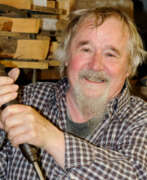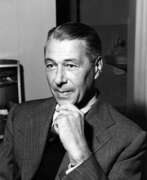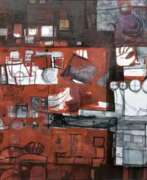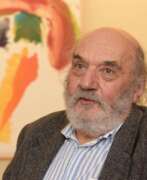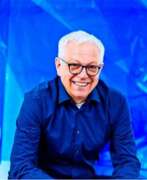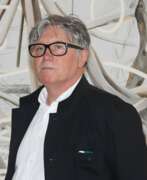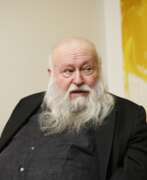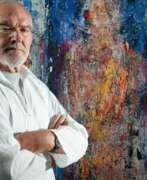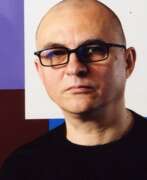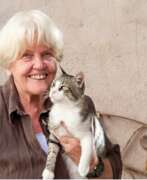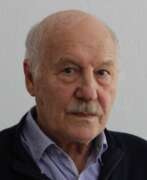Austria Abstract art
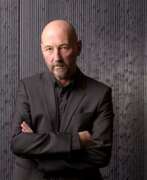

Jakob Gasteiger is an Austrian artist, representative of analytical painting, living and working in Vienna and in Weinviertel.
Gasteiger studied stage design at the University of Music and Performing Arts in Salzburg and attended the Institute for Teaching and Research in Graphic Arts. Since 2013, he has been working in the studio at Weinviertel. Jakob Gasteiger is considered a representative of analytical painting.
In his works he questions the parameters of painting, expanding and breaking the boundaries of graphics, painting and sculpture. The artist's most extensive group of works are predominantly monochrome paintings with relief structures, which are formed with the help of a comb spatula when applying paint to the background of the painting. As of late 2018, Gasteiger has expanded this group of works through the use of neon colors. He also creates aluminum sculptures and installations.
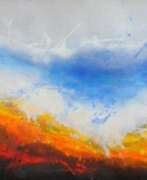

Tom Hartwig is an Austrian artist and restorer.
He trained as an art restorer in Salzburg, where he also met famous artists. Since 1974 he has worked in Germany, including as an art restorer, but he has become increasingly fascinated by painting.
Tom Hartwig's world is colorful and strange; he creates powerful, large-format works, which he often frames as diptychs or triptychs. He is fascinated by the processes of nature and its power, especially "creative destruction. A volcanic eruption preparing the earth for a new life, a planetary explosion resulting in the formation of thousands of stars are the main subjects of the artist.


Horst Kordes is a German artist originally from Austria who found his creative home in Düsseldorf.
Kordes is one of the most famous artists of mixed-media pop art, his work falls between figurative and abstract. His intricately detailed, vivid and distinctive compositions convey the diversity of individual elements as part of an ensemble. In many of his works, Kordes uses the symbolic representation of the skull, which refers back to ancient peoples and their beliefs. He mainly creates with acrylic paints and pigments on canvas.


Suse Krawagna is an Austrian artist and graphic artist.
Suse Krawagna studied at the Academy of Fine Arts in Vienna and at the Royal College of Art in London. Her work is based on the observation of architectural details, her attention is drawn to shapes, clusters of forms and details of objects. Suze creates her paintings in series, demonstrating their dramatic variation through slight variations in lines.
Suse Krawagna has won numerous awards, including the Anton Feistauer Award and others. Her work has been shown in solo and group exhibitions both in Austria and abroad, and is also presented in private and international exhibitions.
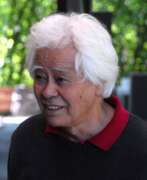

Osamu Nakajima is a Japanese-Austrian sculptor of Asian modern and contemporary art. He is one of the first artists who were able to realize pure abstraction for sculptures in public space. His monochrome stone sculptures are based on basic geometric forms and rational principles of order, which, however, find new and unusual solutions.


Wolfgang Robert Paalen was an Austrian-Mexican painter, sculptor, and art philosopher. A member of the Abstraction-Création group from 1934 to 1935, he joined the influential Surrealist movement in 1935 and was one of its prominent exponents until 1942. Whilst in exile in Mexico, he founded his own counter-surrealist art-magazine DYN, in which he summarized his critical attitude towards radical subjectivism and Freudo-Marxism in Surrealism with his philosophy of contingency. He rejoined the group between 1951 and 1954, during his sojourn in Paris.


Markus Prachensky is an Austrian artist, one of the leading figures of the Austrian avant-garde and a representative of the Informel and Tachisme styles.
Originally influenced by Piet Mondrian, Prachensky developed his typical visual language in 1956. In the same year, together with Wolfgang Hollega, Josef Mikl and Arnulf Rainer, he founded the artist group St. Stephan (Gruppe St. Stephan).
Prachensky lived and worked alternately in Paris, Vienna, Berlin and Los Angeles. He returned to Europe in 1970 and was director of the painting master class at the Academy of Fine Arts from 1983 to 2000.
Keeping with formal expression, for many years the artist used only a fierce, irresistible red. Later he included green, purple, black and brown, and yellow in his painting palette. The main elements of many of his paintings are vertical stripes with layers of color superimposed on them.
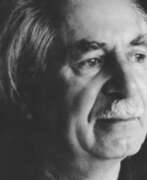

Thomas Ring was a German astrologer, painter and poet.
Thomas Ring studied in the class of the graphic artist Emil Orlik. He was intensively involved in the emerging expressionism and abstract painting.
As a 'degenerate painter' and (from 1927) a member of the Communist Party, he and his family emigrated to Austria at the end of 1932. In 1943 and 1944 he worked at the Institute of Psychology at the University of Strasbourg during the Second World War. After Strasbourg was liberated from the Nazis by the Allies, both he and his wife were imprisoned in a French prisoner-of-war camp.
After his liberation from the camp, Thomas Ring returned to Austria in 1946. In 1952 he settled in the countryside in the Black Forest, Germany.
He took part in three exhibitions (1961 in Berlin, 1971 and 1973 in Cologne), in which he was presented as a constructivist and a member of Der Strum. In 1974, Dumont Studio Cologne held a solo exhibition with forty-seven of his works.
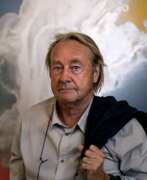

Hubert Scheibl is an Austrian painter, draughtsman, and photographer, one of the most important Austrian representatives of abstract painting.
Hubert Scheibl studied with Arnulf Rainer at the Academy of Fine Arts in Vienna, lived in New York for several years, which influenced his work. In the 1980s he was a member of the Neue Wilden group.


Erich Schobesberger is an Austrian artist who lives and works in Salzburg.
At first he worked in tourism and visited many beautiful places in the world. Only at the age of 30 Schobesberger became interested in painting, and since 1990 the art world has learned about the self-taught artist. In 1992 he made a sensation at the 7th International Art Fair in Los Angeles, when the famous art collector Arnold Ashkenazi bought all his exhibited paintings.
Schobesberger's large-format acrylic and lacquer paintings testify to his virtuoso handling of materials and colors.
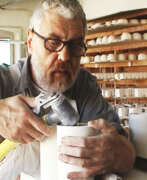

Kurt Spurey is an Austrian artist and ceramic sculptor.
He studied silicate technology at the Technical and Industrial College in Vienna. Spurey is known for porcelain vessels, bowls and vases in the style of abstract concretism and also creates outdoor sculptures in steel and aluminum, concrete and terracotta.
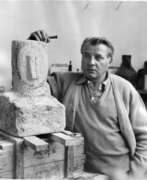

Fritz Wotruba was an Austrian sculptor of Czecho-Hungarian descent. He was considered one of the most notable sculptors of the 20th century in Austria. In his work, he increasingly dissolves figurative components in favor of geometrical abstraction with the shape of the cube as the basic form.
